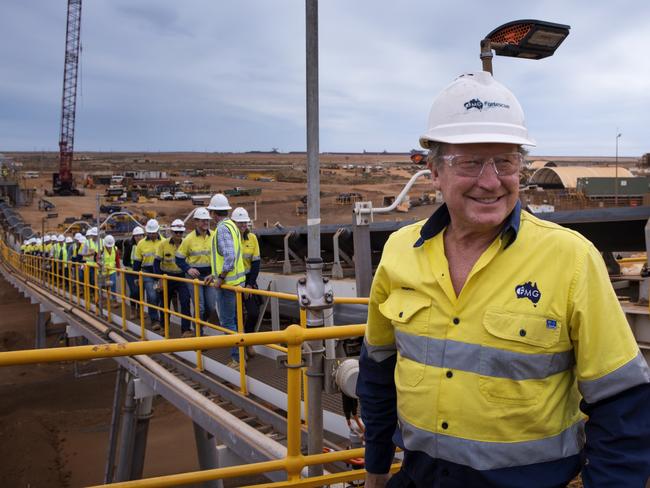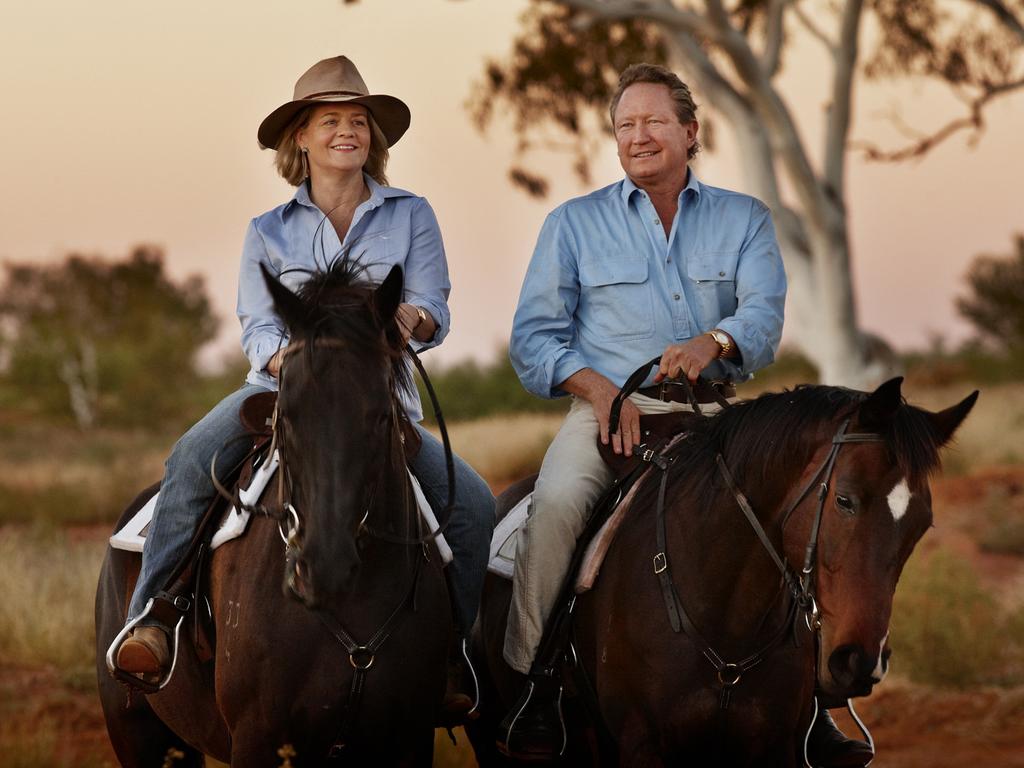When the couple announced their split late on Wednesday, they were at pains to make it clear that nothing would change at the iron ore major.
“There will be no change to the control, direction or major shareholding owned by Tattarang and Dr Forrest’s associated entities, except for what has been previously advised, that Dr Andrew Forrest and Nicola Forrest will be transferring their wealth to charity over their lifetimes,” Fortescue said on Thursday.
“Dr Forrest remains Executive Chair of Fortescue and Chair of Tattarang and Minderoo Foundation.”
The separation will come as a surprise to few. Rumours of a rift have been circulating for months.
Under the changes to the structure of the family holdings lodged with the Australian Securities Exchange in late June, Nicola Forrest now controls 50 million Fortescue shares – about 1.6 per cent of the company, and 4.4 per cent of their combined holdings – through a company she directly owns, Coaxial Ventures.
The couple’s additional corporate interests are jointly held through Tattarang – which ASIC records show is owned equally by the former couple, and holds about 23.8 per cent of Fortescue stock. Another 9 per cent is held by jointly-owned AMNL Financing (a trustee for Tattarang Investment Trust).
Andrew Forrest is the registered holder of 33,363 shares, according to the ASX notice.
The bulk of the remaining holding, 245.7 million shares – or almost 8 per cent of Fortescue – is controlled by the Minderoo Foundation.
The question for Fortescue shareholders is whether these changes will – or could – lead to any uncertainty around the leadership, direction and even eventual control of the iron ore major and would-be energy giant.
The simple answer is, probably not. And certainly not in the near future.

Even if the separation does not end amicably, and heads towards the worst case – of which there is no sign – in reality, very little of the 36.7 per cent of Fortescue held by the former couple could come onto the market without the agreement of both parties.
Coaxial could sell its 50 million shares, but the sale of that 1.6 per cent would have little impact on overall control of Fortescue.
As far as can be gleaned from ASIC records, the biggest stake of 27.1 per cent of Fortescue stock is held equally between Andrew and Nicola Forrest in Tattarang and other corporate vehicles – although trustee structures make it far more difficult to get a clear picture of effective control of the voting rights.
The only other major block, or 245.7 million Fortescue shares – just under 8 per cent of the company – is held by the family charity, Minderoo.
According to the Australian Charities and Not-for-profits Commission (ACNC) The directors of that charity are Andrew, Nicola and Grace Forrest, corporate lawyer Allan Myers, former Dow Chemicals boss Andrew Liveris, and Perth businessmen Tony Grist and Barry McGuire.
That board could, in theory, order their disposal, or direct them to be voted in a particular fashion at an annual meeting – against the re-election of Dr Forrest to the board, as an extreme example.
In practice that seems extraordinarily unlikely.
Even assuming the separation does not remain amicable, any move to split their combined holdings would require divorce proceedings and a formal asset split – which would, presumably, give the market plenty of notice that a large section of Fortescue could come into play.
Until that point, the ownership reshuffle would presumably give Nicola Forrest an opportunity to wield substantial influence behind the scenes – but arguably no more so than is already the case as part of the power couple.
The reality is that Andrew Forrest, as Fortescue’s founder and executive chairman, remains firmly in control of the iron ore giant.






Does the separation of Andrew and Nicola Forrest put Fortescue Metals Group in play?